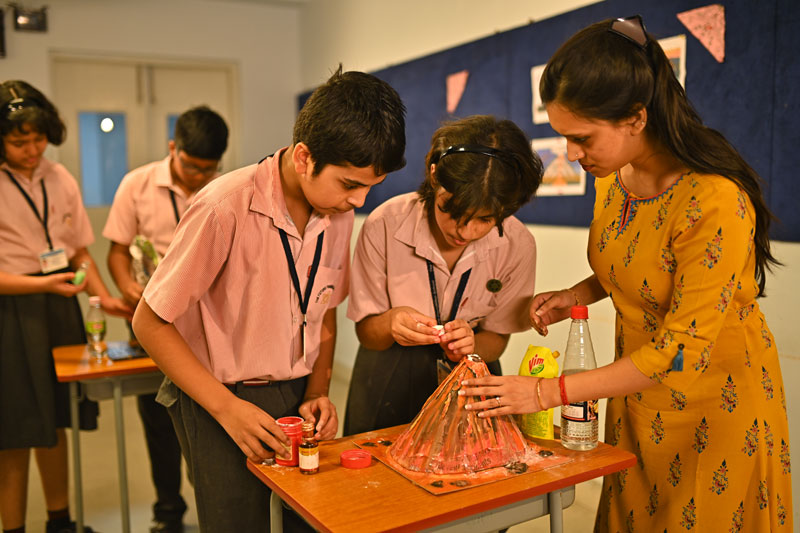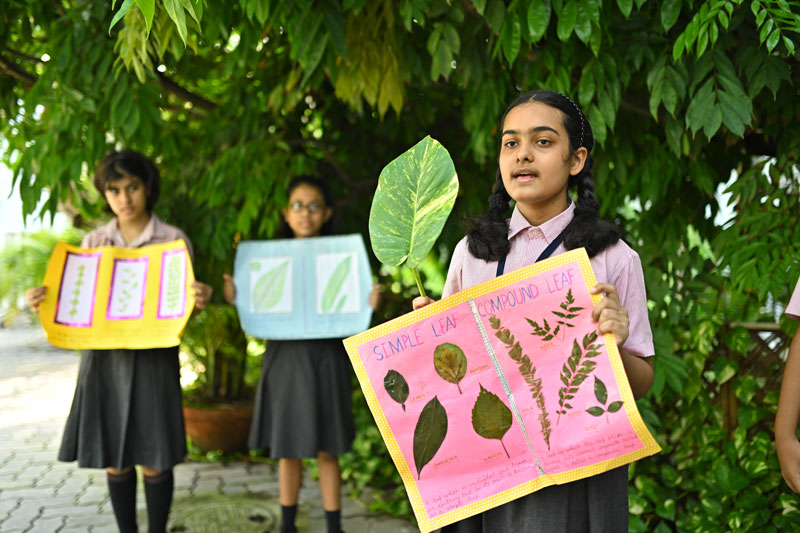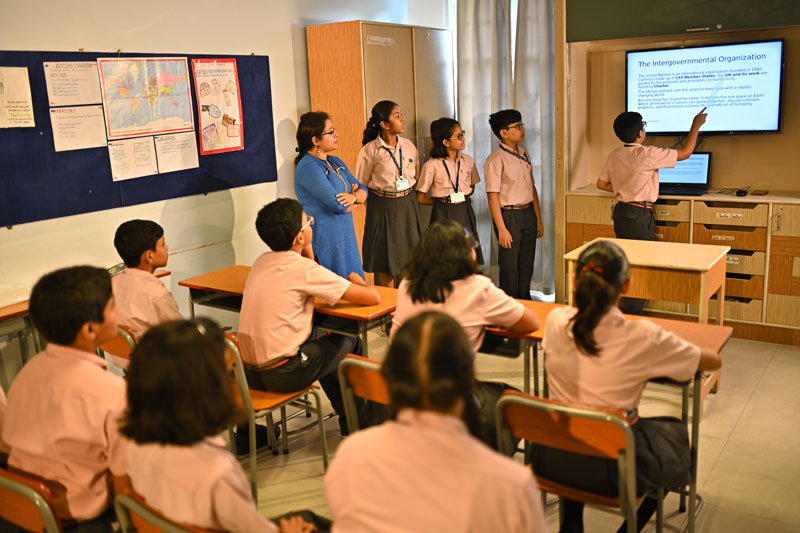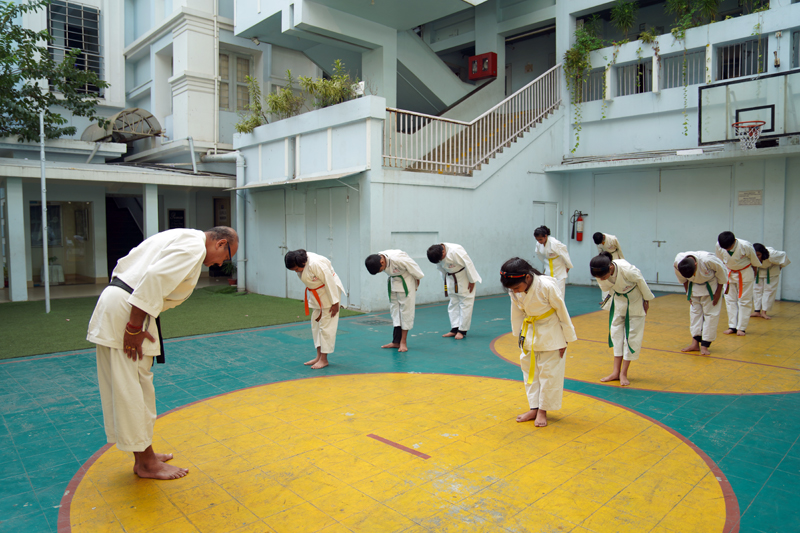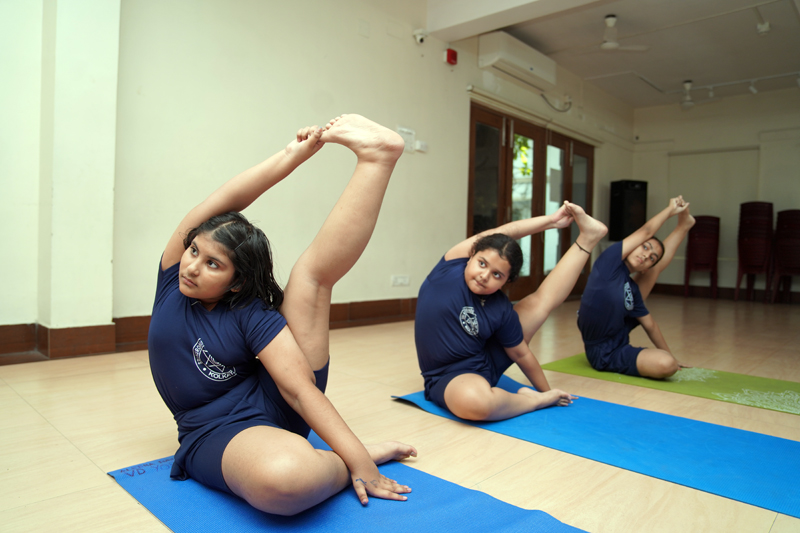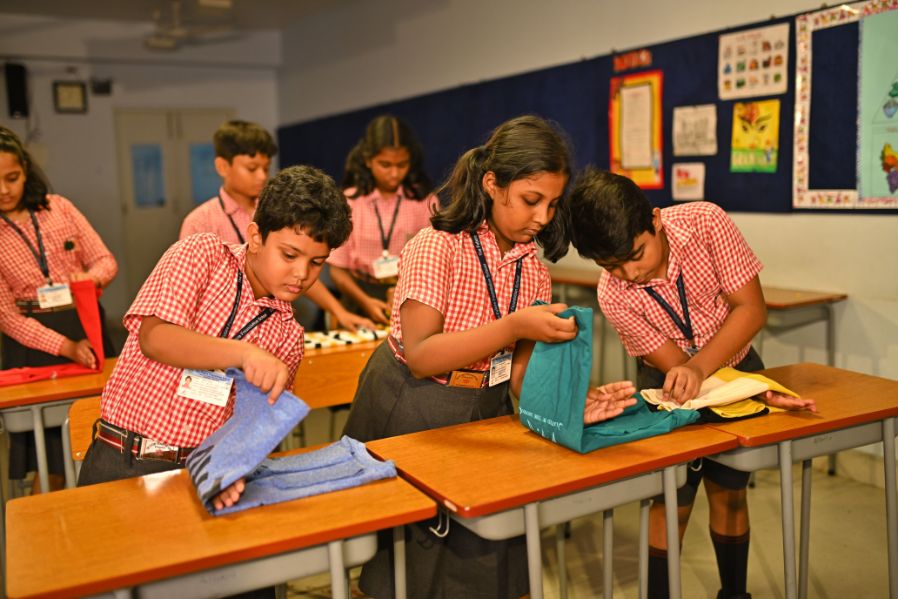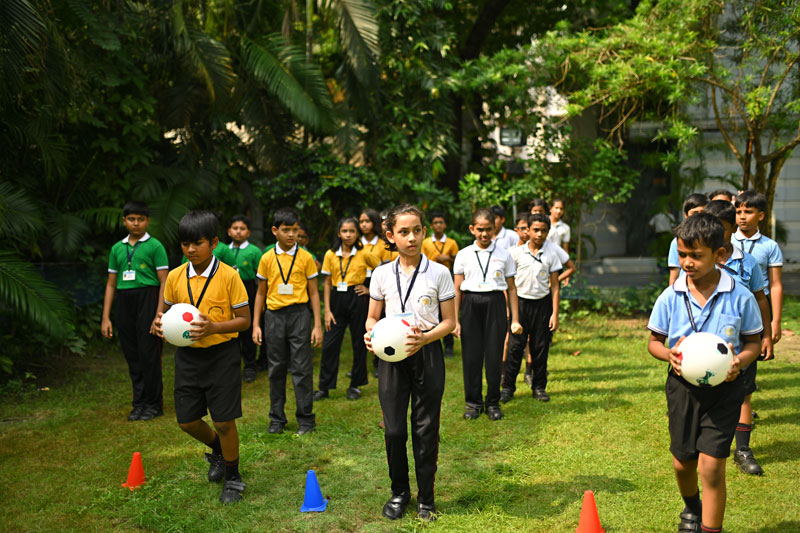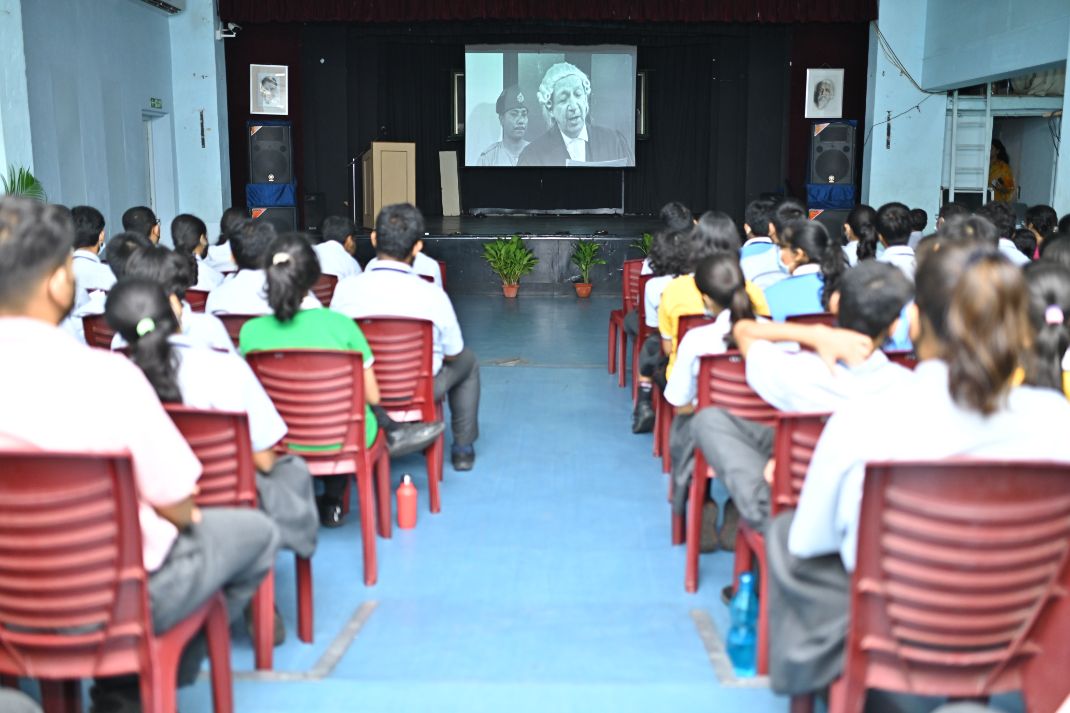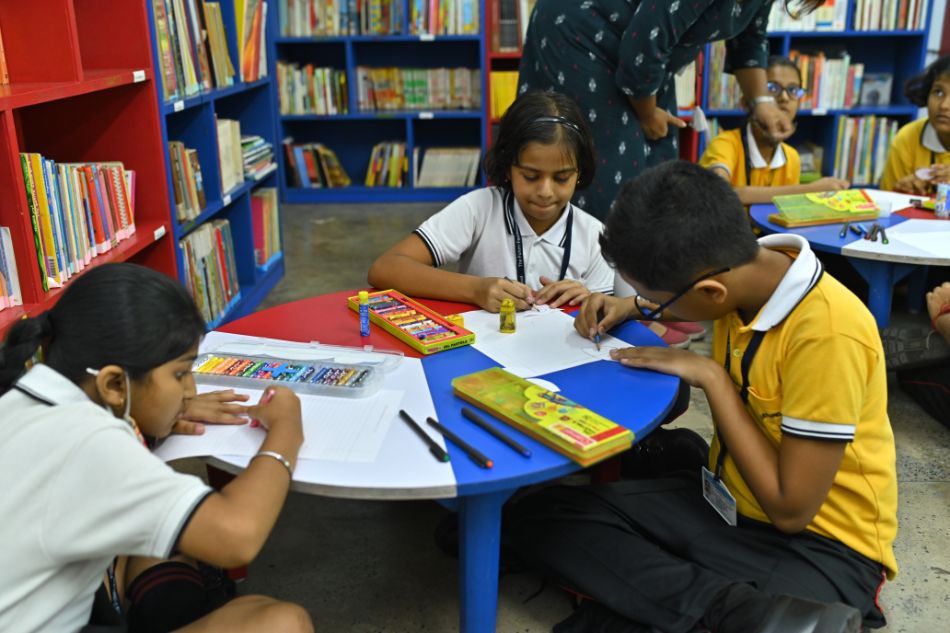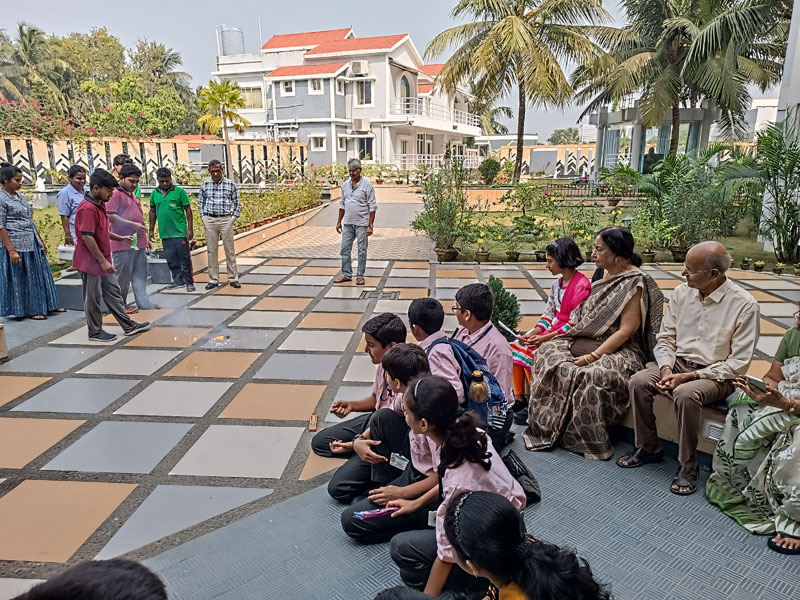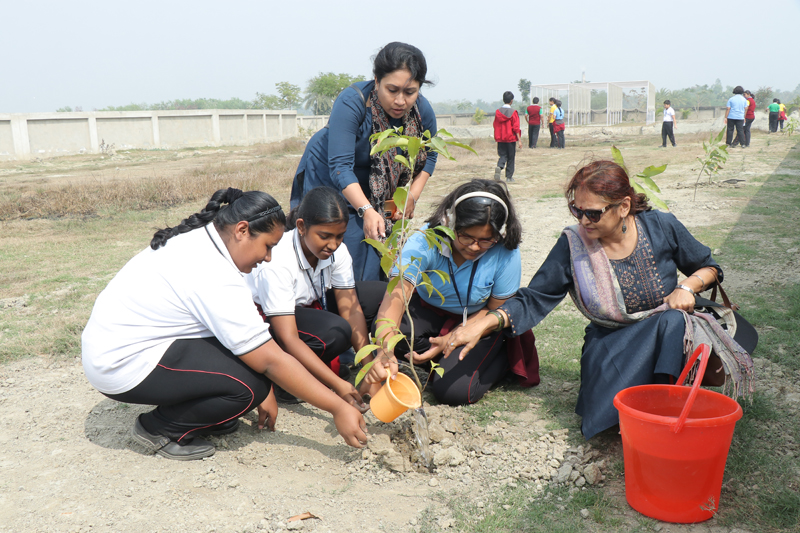CLUBS
Students of Classes VI ,VII and VIII are made members of one of the four clubs/ activities.
Interact – it aims to develop leadership skills in the students while discovering the power of service above self. The club actively works at Community Outreach at Uttarbhag, Baruipur, interacting with the local villagers, organising their medical treatment, holding non formal education classes for the village children, collecting old clothes, books, toys, etc for the village children, holding awareness campaigns, etc. The club members also actively engage with the senior members of Aumorto, the senior living facility under Sri Aurobindo Institute of Culture to celebrate various festivals and events. It is an initiative to foster tender bonding between the aged and the young to enrich the life experiences of both.
The Earth Lovers’ – it aims to generate awareness among students to protect and preserve Mother Earth. The club members actively participate in activities concerning recycling, waste segregation, conservation, bird watching, etc. The students are involved in the plantation programme at Uttarbhag, Baruipur
Impressions & Ideas – it aims to help the students to acquire the awareness and orientation about the culture and heritage of India and the world at large. Through the various workshops, seminars and other programmes students can enhance and nourish their inherent talents and skills. The students also get the rare opportunity to be in direct interaction with many renowned artists who come to perform in Sri Aurobindo Institute of Culture.
Vocational – It is a compulsory activity for Classes VI,VII and VIII. It aims to provide experiential hands-on training regarding various real life requirements by exposing students to actual working conditions. It offers a varied range of activities like interior decoration, first aid, electrical and electronics handling, meal planning, etc that train students with practical skills.
Aesthetic Club – In the present context of unrest and distraction, an aesthetic appreciation club for children is crucial because it:
1. Provides a calming and positive influence
2. Offers a healthy escape from digital overload
3.Helps find balance and tranquility amidst chaos
What is aesthetic appreciation?
Aesthetic appreciation or good taste is the ability to appreciate objective beauty.
Aesthetic taste is influenced by many factors, such as personal or cultural background, familiarity, context, exposure and expertise.
Access to aesthetically interesting and valuable objects and environments and experiences can improve our sensibility.
An Aesthetic Appreciation Club’s importance:
Key Highlights
1. Benefits for students: Enhancing creativity, appreciation, confidence, teamwork, and mindfulness.
2. Life skills development: Attention to detail and critical thinking.
3. Positive impact on school culture: Cultural awareness, enrichment, student engagement, and community building.
Goals of the Club :
The club aims to help students become more sensitive, aware, and conscious of themselves and their surroundings, promoting holistic development.

